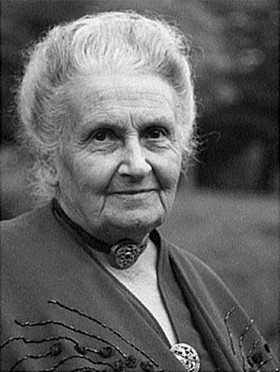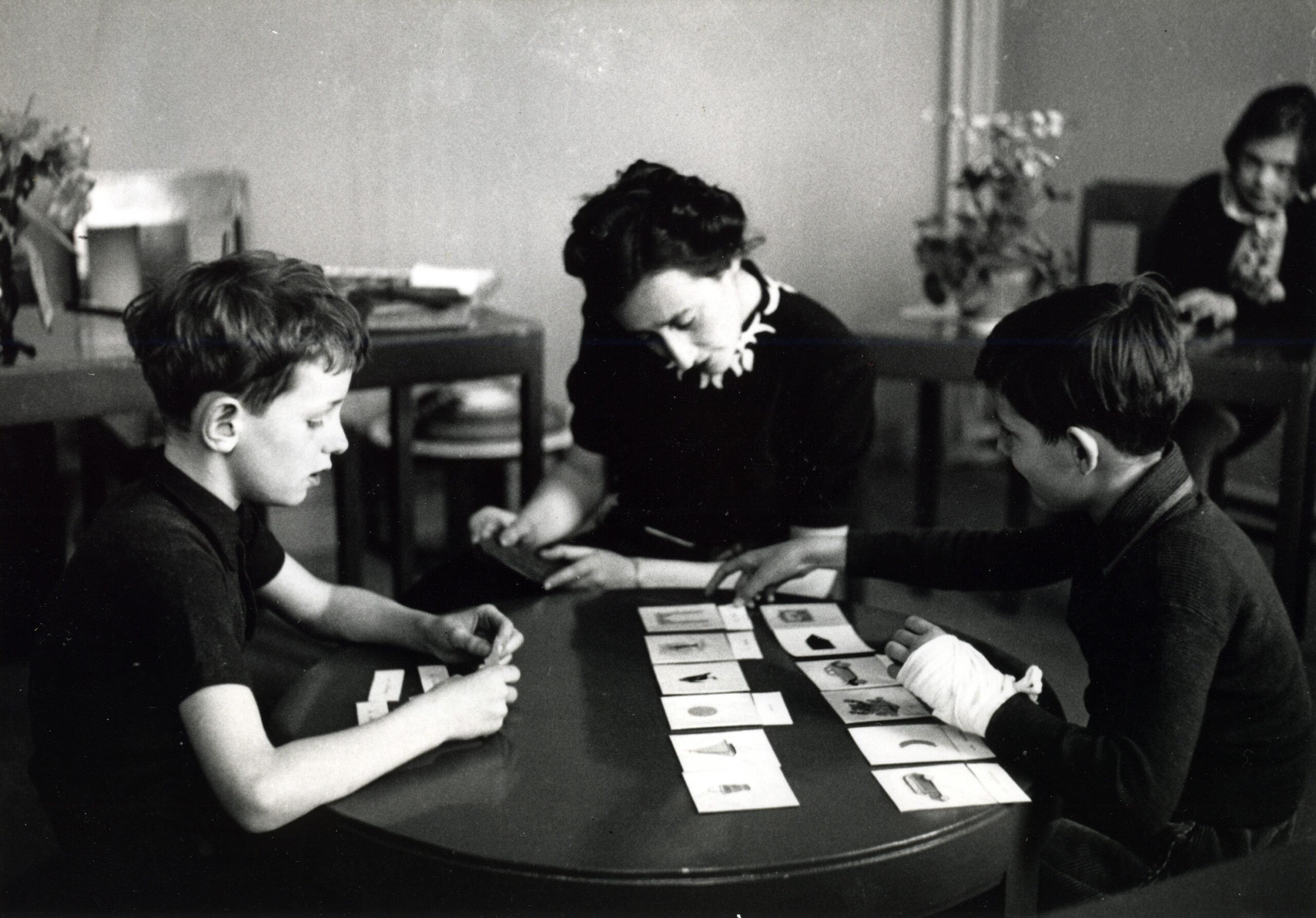
Maria Montessori
Maria Montessori nasce a Chiaravalle (Ancona) il 31 agosto 1870 e trascorre l’infanzia e la giovinezza a Roma. Dopo essersi iscritta alla facoltà di medicina e chirurgia, fatto eccezionale per una donna a quei tempi, nel 1896 si laurea con una tesi in psichiatria diventando la prima dottoressa d’Italia.
Attraverso il suo lavoro clinico, entra presto in contatto con gli ambienti scientifici inglesi e francesi e in particolare si interessa ai lavori di Itard e Seguin sulla possibilità di inserimento nella comunità dei bambini anormali, attraverso un percorso specifico di educazione.
Si impegna anche nel campo dell’emancipazione femminile, partecipando anche al Congresso femminile di Berlino (1896) e a quello successivo di Londra (1899).
La sua carriera
I primi passi della sua carriera la vedono alle prese con i bambini disabili: nel suo lavoro di ricerca presso il manicomio romano di S. Maria della Pietà ai primi del ‘900, ella studia e si prende cura di bambini con difficoltà e turbe del comportamento e comunque tutti in stato di grave abbandono affettivo.
Maria Montessori si accorge che il metodo di insegnamento usato con questo tipo di “pazienti” non è corretto e, dopo anni di studio e sperimentazioni sul campo, elabora un nuovo metodo di istruzione per bambini disabili: già in questa fase la Montessori rileva che i bambini hanno fasi di crescita differenziate e che quindi è necessario differenziare i piani di studio e di apprendimento secondo le reali possibilità del bambino.
Inoltre viene prodotto un metodo di insegnamento completamente differente rispetto a quelli dell’epoca: invece dei metodi tradizionali di lettura e recita a memoria, i bambini vengono istruiti attraverso l’uso di strumenti concreti.
La memorizzazione non passa più attraverso un processo di assimilazione razionale e/o puramente cerebrale, ma viene realizzata attraverso l’uso empirico dei sensi, e quindi anche attraverso il tocco e la manipolazione degli oggetti.
Dal momento che questo nuovo metodo innovativo fa sì che i bambini disabili, in prove controllate da esperti esterni, ottengano punteggi più alti dei bambini normali, Maria Montessori è indotta a pensare che anche i bambini normali possano trarre grande profitto dallo stesso metodo: l’educazione dei sensi come momento preparatorio per lo sviluppo dell’intelligenza, perché l’educazione del bambino, allo stesso modo di quella del portatore di handicap, deve far leva sulla sensibilità.
Il materiale Montessori e sviluppi teorici
Il materiale Montessori educa il bambino all’autocorrezione dell’errore da parte del bambino stesso ed anche al controllo dell’errore senza che la maestra debba sempre intervenire per correggere.
Sulla base di queste esperienze nasce nel 1907 la prima “Casa dei Bambini” nel quartiere San Lorenzo di Roma e nel 1908 la Casa dei Bambini di Via Solari a Milano con l’aiuto della Società Umanitaria.
Nel 1909 Maria Montessori pubblica “Il metodo della pedagogia scientifica applicato all’educazione infantile nelle Case dei Bambini”, presto tradotto in numerosissime lingue, che darà al Metodo Montessori una risonanza mondiale. Già nel 1913, in occasione del suo primo viaggio negli Stati Uniti, viene presentata dal New York Tribune ai suoi lettori come “the most interesting woman in Europe”. Da allora la popolarità del Metodo Montessori negli Stati Uniti non si spegnerà più, fino ad avere un ulteriore forte sviluppo a partire dagli anni ’60 ad opera di Nancy McCormick Rambusch.
Nel 1924 Maria Montessori fonda a Roma l’ente morale “Opera Nazionale Montessori” e nel 1929 l’“Associazione Montessori Internazionale” (A.M.I.).

A causa del suo rifiuto a piegarsi alla propaganda fascista, Maria Montessori entra in contrasto con il regime negli anni ’30, tanto che sarà costretta ad abbandonare il paese nel 1934. Naturalmente ancora maggiore ostilità le viene riservata dai nazisti, che bruciano pubblicamente le sue opere a Berlino e a Vienna negli anni ’30.
Dopo aver vissuto in diverse parti d’Europa durante il fascismo e per un periodo in India durante la seconda guerra mondiale, torna in Italia dopo la fine della Seconda Guerra Mondiale per dedicarsi a riorganizzare l’Opera Nazionale Montessori. Muore il 6 maggio 1952 a Noordwijk, in Olanda.
La sua opera continua a vivere attraverso le centinaia di scuole istituite a suo nome nelle più disparate parti del mondo.

